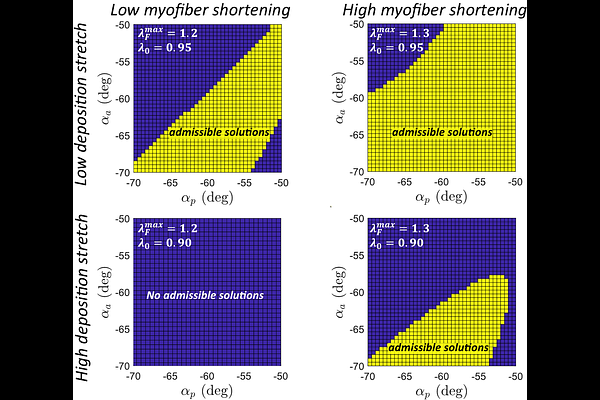Optimized Biomechanical Design of a Pulsatile Fontan Conduit for Congenital Heart Palliation

Optimized Biomechanical Design of a Pulsatile Fontan Conduit for Congenital Heart Palliation
Emuna, N.; Marsden, A. L.; Humphrey, J.
AbstractThe evolution of palliative surgical procedures for children born with congenital heart defects has proven remarkably successful in extending life, but the resulting non-physiological circulation predisposes to myriad sequelae that compromise quality of life and overall life span. Among these procedures, standard-of-care Fontan completion surgery bypasses the nonfunctional ventricle and provides steady flow of deoxygenated blood to the lungs via a synthetic conduit that typically connects the inferior vena cava to a pulmonary artery. This altered circulation reduces cardiac output, elevates central venous pressures, and possibly contributes to adverse remodeling of the pulmonary vessels. There is, therefore, strong motivation to develop a next generation Fontan conduit capable of serving as a sub-pulmonic pulsatile pump, and there are now several reports of initial attempts. None of these studies have been driven by biomechanical considerations, however, and none have achieved the desired functionality. We thus present a novel analytical framework to improve design and guide fabrication by focusing on the microstructure and material properties of the contractile myofibers and associated passive matrix. Our optimized designs simultaneously ensure desired levels of stroke volume, ejection fraction, and pressure generation given constraints on Frank-Starling myofiber contraction and the limited space within the thoracic cavity of a three- to four-year-old child. This analysis also highlights the need to minimize any associated axial force or torque generation that a pulsatile conduit could transmit to the host vessels at the requisite anastomoses.